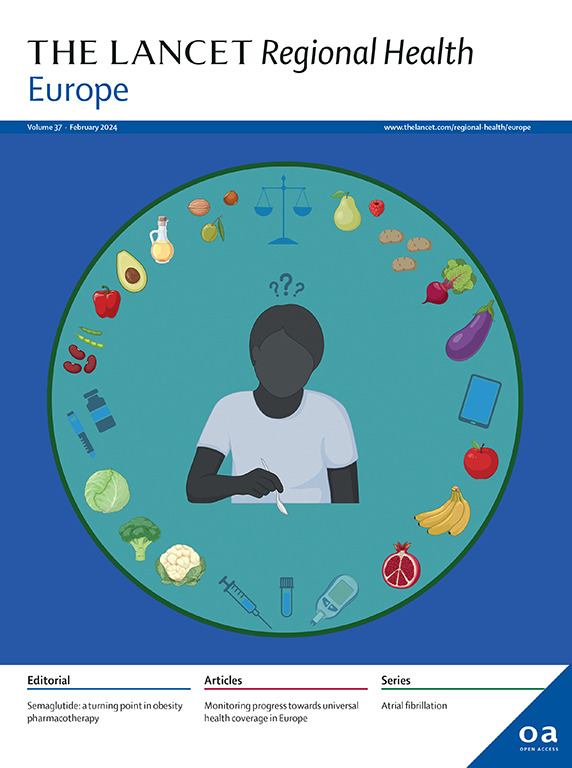使用无创设备系统筛查心房颤动:系统综述与荟萃分析
IF 13.6
Q1 HEALTH CARE SCIENCES & SERVICES
引用次数: 0
摘要
本文章由计算机程序翻译,如有差异,请以英文原文为准。
Systematic screening for atrial fibrillation with non-invasive devices: a systematic review and meta-analysis
Background
Systematic screening individuals with non-invasive devices may improve diagnosis of atrial fibrillation (AF) and reduce adverse clinical events. We systematically reviewed the existing literature to determine the yield of new AF diagnosis associated with systematic AF screening, the relative increase in yield of new AF diagnosis with systematic screening compared to usual care, and the effect of systematic AF screening on clinical outcomes compared with usual care.
Methods
The Medline, Embase, Web of Science and Cochrane Library databases were searched from inception through 1st February 2025 for prospective cohort studies or randomised clinical trials (RCTs) of systematic AF screening with the outcome of incidence of previously undiagnosed AF from screening. Incidence rates (IR) and relative risks were calculated and random effects meta-analysis performed to synthesise rates of AF in prospective cohort studies and RCTs, as well as outcomes in RCTs.
Findings
From 3806 unique records we included 32 studies representing 735,542 participants from 8 RCTs and 24 prospective cohorts. The diagnosis rate for incident AF in prospective cohorts was 2.75% (95% CI 1.87–3.62), and the pooled relative risk in RCTs was 2.22 (95% CI 1.41–3.50). The use of age and NT-proBNP (IR 4.36%, 95% CI 3.77–5.08) or AF risk score classification (4.79%, 95% CI 3.62–6.29) led to higher new AF diagnosis yields than age alone (0.93%, 95% CI 0.28–2.99). Pooled data from RCTs did not demonstrate an effect of screening on death (RR 1.01, 95% CI 0.97–1.05), cardiovascular hospitalisation (1.00, 95% CI 0.97–1.03), stroke (0.95, 95% CI 0.87–1.04) or bleeding (1.08, 95% CI 0.91–1.29).
Interpretation
Systematic screening for AF using non-invasive devices is associated with increased diagnosis of AF, but not reduced adverse clinical events. Screening studies of AF utilising alternative risk stratifications and outcome measures are required.
Funding
British Heart Foundation (grant reference CC/22/250026) and National Institute for Health and Care Research.
求助全文
通过发布文献求助,成功后即可免费获取论文全文。
去求助
来源期刊

Lancet Regional Health-Europe
Multiple-
CiteScore
19.90
自引率
1.40%
发文量
260
审稿时长
9 weeks
期刊介绍:
The Lancet Regional Health – Europe, a gold open access journal, is part of The Lancet's global effort to promote healthcare quality and accessibility worldwide. It focuses on advancing clinical practice and health policy in the European region to enhance health outcomes. The journal publishes high-quality original research advocating changes in clinical practice and health policy. It also includes reviews, commentaries, and opinion pieces on regional health topics, such as infection and disease prevention, healthy aging, and reducing health disparities.
 求助内容:
求助内容: 应助结果提醒方式:
应助结果提醒方式:


